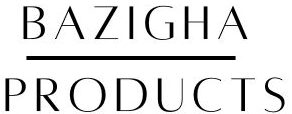Toner is one of the most misunderstood steps in skincare. It’s often seen as optional, outdated, or confusing, but the truth is that toner is a powerful tool in your skincare routine. In this article, we’ll cover what toner is in skincare and why it matters.
Now, toner’s purpose has shifted from simply astringent and alcohol-based to a sophisticated bridge between cleansing and moisturizing. In the past, toners were used just for oily skin and acne problems. If you skip toner or misuse it, you’re missing out.
What Is Toner in Skincare?
A toner is a liquid solution applied after cleansing and before serums or moisturizers. It restores your skin’s pH, removes any residue from cleansing, and provides a quick dose of hydration or active ingredients.
- Toners are of different kinds now, each with a specific immersion:
- Hydrating toners with ingredients like hyaluronic acid or glycerin.
- Exfoliating toners that include AHAs (alpha hydroxy acids) or BHAs (beta hydroxy acids) to help clear pores and remove dead skin cells.
- Balancing or pH toners that help your skin recover from harsh cleansers or tap water.
- Soothing toners contain aloe, chamomile, and centella asiatica to calm sensitive or inflamed skin.
Why pH Matters?
Healthy skin’s pH is around 4.5 to 5.5, which is slightly acidic. Toner keeps moisture in and harmful bacteria out.
Cleansers, like foaming or soap-based ones, can throw your pH out of balance. Your skin gets irritated, dry, or breaks out when that happens. A well-developed toner quickly brings your skin back into its optimal range, minimizing inflammation and helping maintain a strong skin barrier.

Benefits of Toner
1. Hydration:
Many toners act like a first layer of moisture. Unlike heavy creams, a hydrating toner sinks in fast and leaves your skin plump and ready for activities. Lightweight hydration is one of the best ways to build long-lasting moisture without clogging pores.
2. Better Absorption of Actives
Consider toner like a sponge’s first soak. A dry sponge resists water at first; a damp sponge absorbs faster. The same is true for skin. Serums and moisturizers are better absorbed by wet, balanced skin. That means your expensive serums work more effectively with toner.
3. Mild Exfoliation
Toners with glycolic, lactic, or salicylic acids gently remove dead skin cells. This leads to clearer skin, faded dark spots, fewer breakouts, and a smoother texture. The key is moderation—using exfoliating toners only as often as your skin tolerates, like 1-3 times a week, is a good start.
4. Calming and Soothing
If your skin is reactive or prone to redness, soothing toners can take down inflammation. Ingredients like green tea, allantoin, and panthenol reduce redness and help heal the skin. This can make a massive difference for people with rosacea or acne.
5. Oil Control and Pore Refinement
Some toners, especially those with witch hazel or niacinamide, help tighten pores and reduce excess oil production. This is useful if you have oily or combination skin, as it helps keep your T-zone in check without over-drying.
Do You Need a Toner?
That depends. If your skin is healthy, your cleanser is pH-balanced, and your routine is simple and working—you might be fine without one.
But if:
your skin feels tight or dry after cleansing
your products don’t seem to absorb well
you have fin with acne, redness, or texture
or you want to level up your routine
…then a toner is worth trying.
How to Use Toner the Right Way
- After Cleansing: Apply toner on damp skin to maximize hydration after cleansing.
- Use Your Hands or a Cotton Pad: For hydrating toners, use your hands. For exfoliating toners, a cotton pad gives a light physical sweep.
- Let It Sink In: Give it 30–60 seconds before moving on to your serum.
- Don’t Overdo It: Too much toner use will damage your skin barrier.
Choose the Right Toner for Your Skin Type
- Dry Skin: Look for hydrating toner formulas with glycerin, hyaluronic acid, or squalane. Avoid anything with alcohol or witch hazel.
- Oily/Acne-Prone Skin: Exfoliating toners with salicylic acid. So can niacinamide for oil control.
- Sensitive Skin: Stick to calming toners with aloe, chamomile, or no added fragrance.
- Combination Skin: You might want two toners—hydrating for cheeks and exfoliating for the T-zone.
The Evolution of Toner
In the past, toner used to be all alcohol and sting. Those senescent formulas bare your skin and leave it dry. The new generation? Much smarter. More targeted. More nourishing.
K-beauty revolutionized toner with hydrating, essence-like formulas; now, Western brands have caught up. Toner is no longer just a backup cleanser; it’s a treatment step in its own right.
Final Thoughts: What is Toner in Skincare, and why does it matter?
Toner may not be flashy—it’s not a retinol or a miracle serum—but it’s a quiet MVP—the product that subtly transforms your skin’s balance, feel, and performance. When used consistently, toner can upgrade your entire routine.
So don’t sleep on toner. If you’ve discarded it as unnecessary, reconsider. Your skin might thank you.
Discover more from BAZIGHAPRODUCTS
Subscribe to get the latest posts sent to your email.
